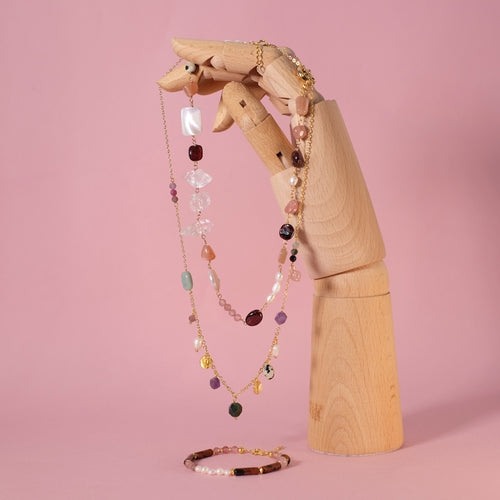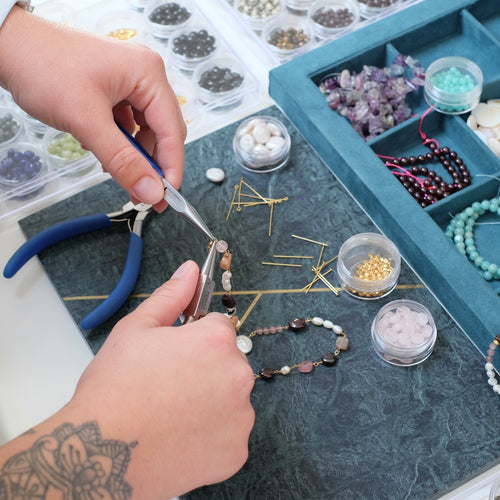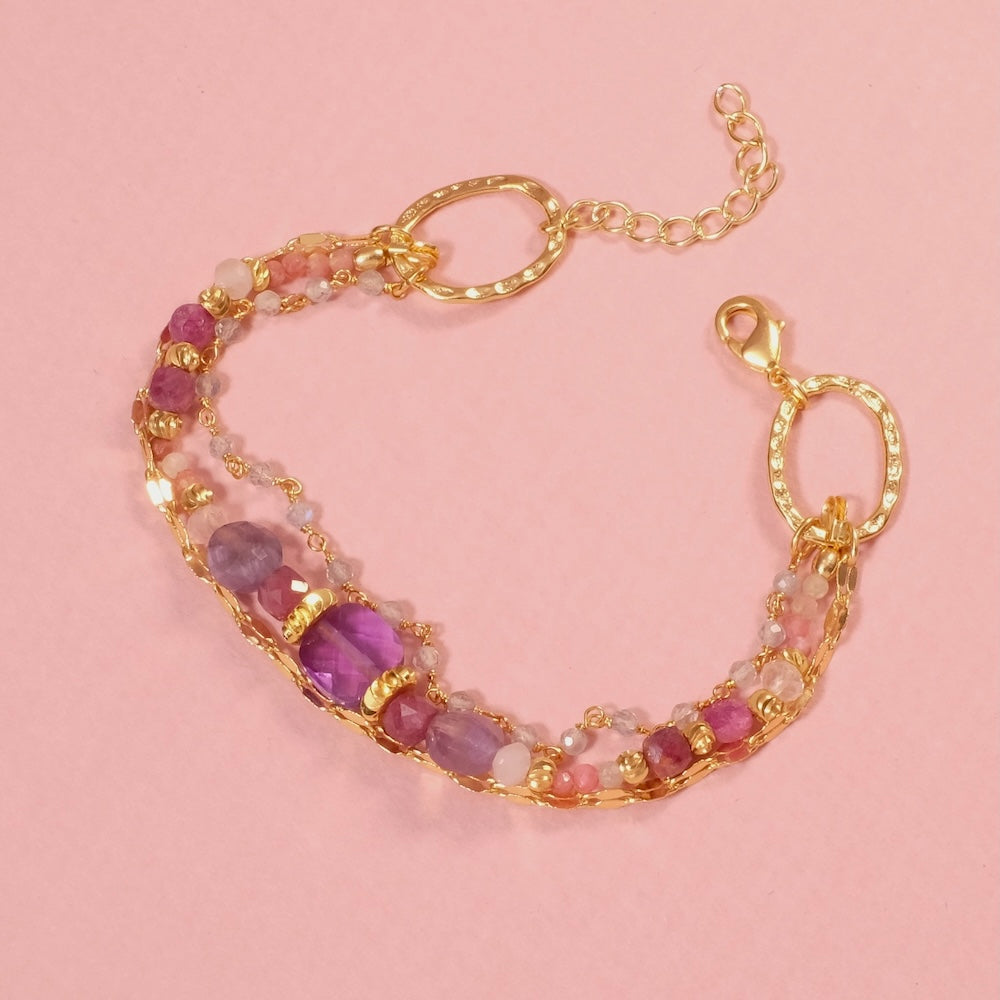Livraison offerte en point relais à partir de 59€
Livraison offerte en point relais à partir de 59€
Découvrez nos nombreuses créations à réaliser vous-même...
Nos produits sélectionnés et fabriqués avec le plus grand soin
Les Perles divers
Ajoutez de la couleur à vos créations !
Les fils pour bijoux
Wellness & Good Vibes !
Pour sublimer vos créations !
|
Découvrez comment réaliser un tissage de perles Miyuki sur métier à tisser.
|
|---|
| Pour cette réalisation il vous faut : | ||||
|
|
||||
| Les techniques de tissages : | ||||
|
Retrouvez cette technique prochainement dans un autre tutoriel. |
||||
| Etape 1: | ||||
|
|
Pour commencer, choisissez la couleur de fil. Choisissez votre motif et réalisez une grille / diagramme qui vous guidera pour le montage. Faites un noeud sur un des pivots.
|
|||
|
Tout en maintenant la bobine dans votre main, placez le fil entre le ressort jusqu'au ressort d'en face. Enroulez le fil autour du pivot sur plusieurs tours et revenez vers le premier pivot.
|
 |
|
|
Continuez ainsi jusqu'au nombre de rangées voulues. Pour connaitre la largeur voulue et donc le nombre de rangée de fil :
Ensuite faites un noeud en revenant sur le premier pivot. Pour un nombre de perles impair terminez sur le premier.
|
| Etape 2: | ||||
|
Coupez un nouveau fil d'environ 1m50 ( en fonction de la réalisation )
Faites un double noeud sur le fil extérieur à droite.
|
 |
|||
| Etape 3: | ||||
 |
Ensuite, placez l'aiguille sur le fil. Selon le fermoir utilisé vous pouvez réaliser un tissage de fil en alternant le passage en dessous et au dessus des fils. Faites 3 ou 4 aller/retour. Utilisez cette technique avec des fermoirs tubes mais pas pour une finition nette (ex: manchette) Puis enfilez les perles de la première rangée en suivant la grille. |
|||
|
Passez les perles sous le métier à tisser puis, avec un doigt, positionnez les perles entre les fils et repassez l'aiguille dans la rangée de perle. Le fil passe d'abord sous les fils verticaux puis par dessus. Les perles coulissent donc sur les fils.
|
 |
|
|
Continuez ainsi jusqu'au nombre de rangées voulues. Si vous avez besoin d'un raccord de fil, veilliez à ce que le noeud soit caché dans une perle. |
|
|
| Etape 4: | ||||
|
Une fois le tissage terminé, coupez les fil au niveau des pivots. Faites très attention car les perles coulissent sur les fils.
|
 |
|||
|
|
Pour un bracelet souple, vous aurez réalisé le tissage de fils au début et à la fin. Ensuite vous ferez des noeuds avec les fils. Le premier avec le deuxième, le deuxième avec le troisième ... afin de bloquer les perles. Vous pourrez utiliser un fermoir tube pour y rentrer la première rangée de perle plus les fils ou un fermoir magnétique...
|
|
Pour une finition nette ou pour coller le tissage sur une structure par exemple, Et voilà! |
 |
No product was found in this collection


Composez un bijou unique en sélectionnant Pierres de gemmes et apprêts doré à l’or fin 24K (Europe). Vous apprendrez les bases du montage, les harmonies de couleurs et les finitions propres—puis repartirez avec votre création, créé dans une ambiance conviviale à Paris 11e.
A réserver seule ou entre amies !
Rejoignez Perles Corner pour découvrir nos nouveautés, Tutoriels exclusifs et bien d'autres surprises... et recevez votre bon par email !




